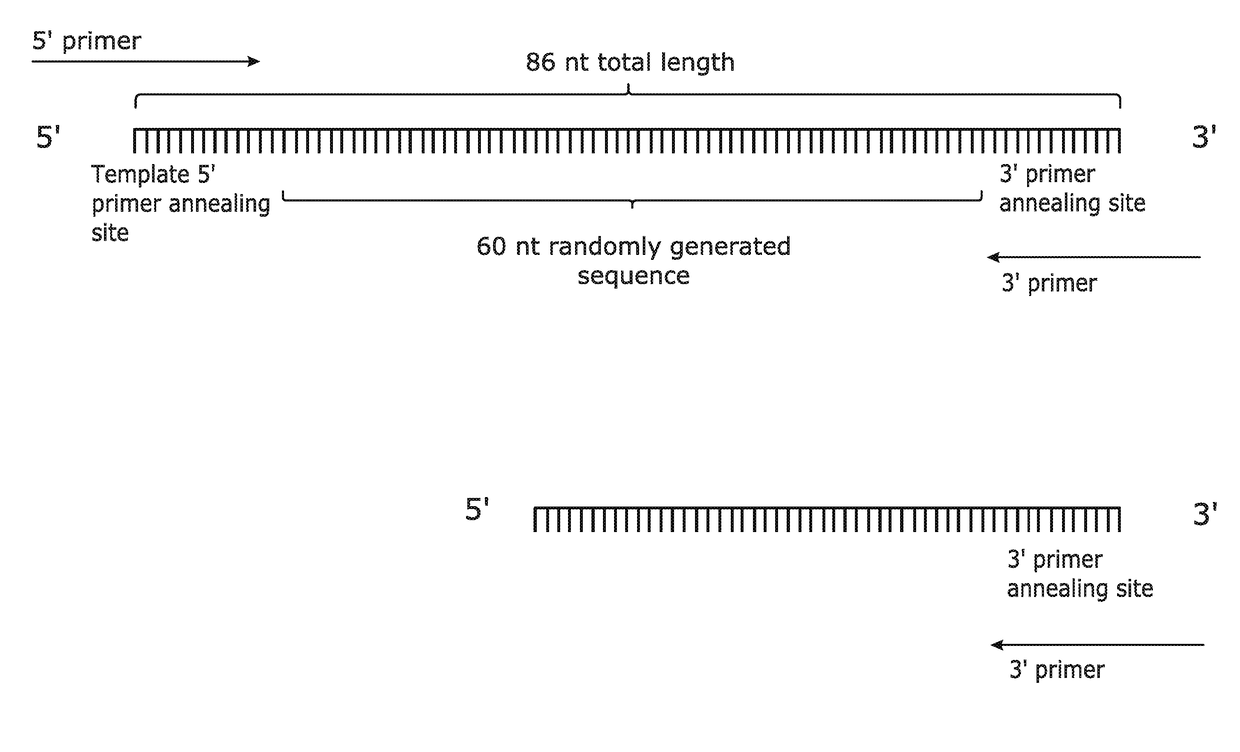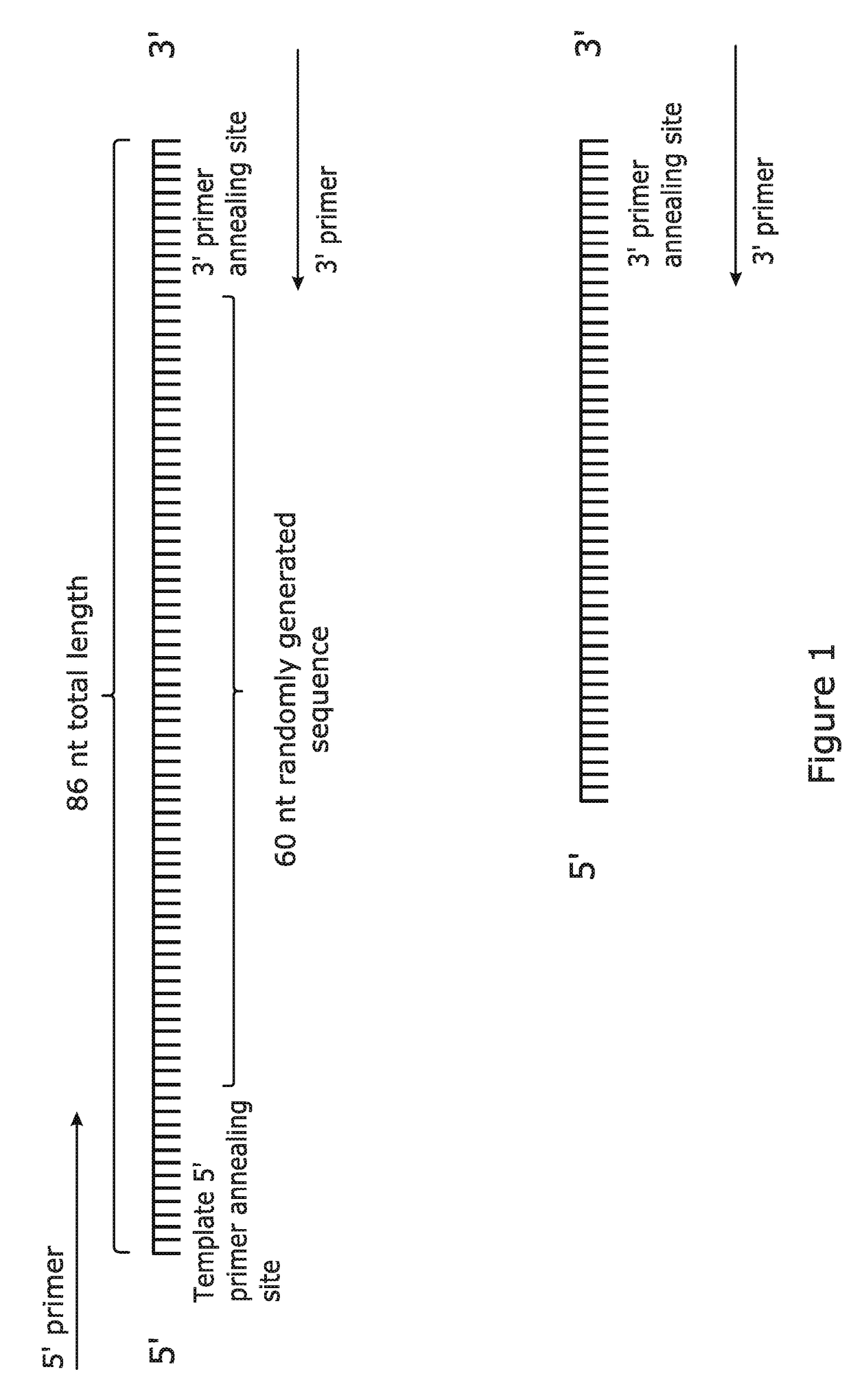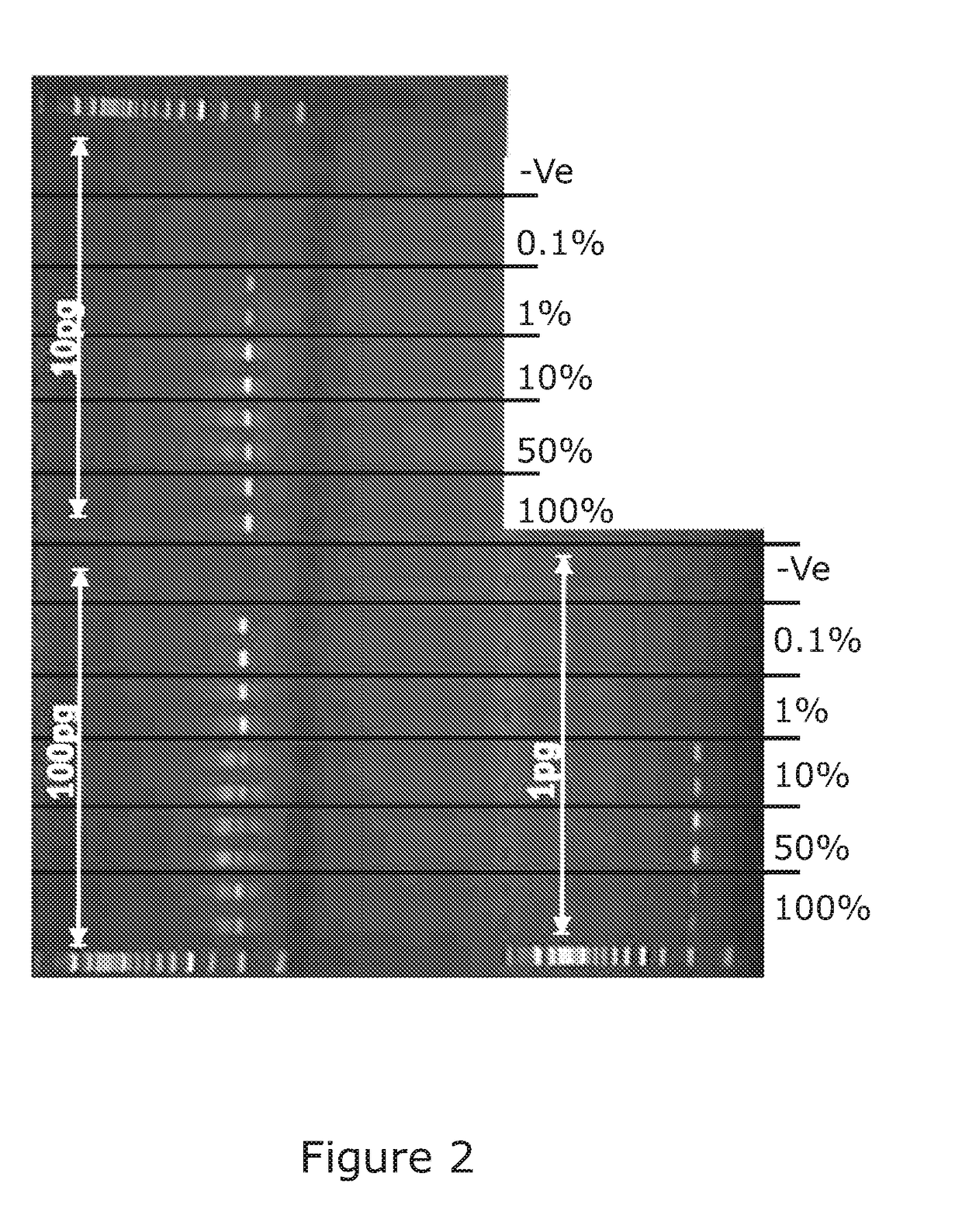Improvements in and relating to nucleic acid probes and hybridisation methods
a technology applied in the field of nucleic acid probes and hybridisation methods, can solve the problems of inability to routinely sequence complex genomes in their entirety, high cost per base of sequence, and inability to detect or recover unintended dna sequences
- Summary
- Abstract
- Description
- Claims
- Application Information
AI Technical Summary
Benefits of technology
Problems solved by technology
Method used
Image
Examples
example 1
ON COMPLEX POOL PCR
[0090]An optimised method for the amplification of complex pools containing array-synthesised short (<200 bp) single-stranded DNA molecules was developed. A ‘model’ pool (produced by conventional long oligonucleotide synthesis) was used to evaluate various reaction parameters. The model pool as shown in FIG. 1 was designed to accurately represent complex pools of array-synthesised single-stranded DNA molecules, and it consisted of: a 9 nt, 13 nt or 20 nt template 5′ primer annealing site; a run of 60 (or more) randomly incorporated nucleotides (representative of the hundreds of thousands of unique sequences available during array synthesis); and a 9 nt, 13 nt or 20 nt 3′ primer annealing site. Terminal primer annealing sites of 13 nt were used to maximise the “unique sequence” capacity of the single-stranded DNA molecules. The complex pool was purified by Polyacrylamide Gel Electrophoresis (PAGE) and High Pressure Liquid Chromatography (HPLC) by Biomers-net GmbH (...
example 2
BASED COMPLEX POOL PCR
[0095]Emulsion PCR (EMPCR) has been proposed as a means to improve troublesome PCRs, especially if they involve complex template DNA mixtures. EMPCR entails creating, in one tube, millions of femtolitre sized droplets of oil-coated water (including PCR buffer, primers etc), such that each of these volumes acts as a separate reaction vessel within which PCR amplification can occur starting from a few template molecules. Since this arrangement reduces the chances of cross-priming and other undesirable interactions between different templates and their products, there is theoretically a limited risk of generating many different false products. Also, should cross-priming occur, the encapsulation limits the resources available to the un-desirable product thus preventing over amplification. This does not, however eliminate the possibility of false internal priming within synthesized strands (by primers or products strands), or concatamerisation between single-strande...
example 3
COMPLEX POOL PCR ACCORDING TO THE TENTH ASPECT OF THE INVENTION
[0101]Spurious products in complex pool PCR may be caused by ‘over-cycling’; especially since the problem worsens as the total number of thermal cycles increases. The concentration of genuine product will rise so high in the later cycles that DNA strands can; a) start to cross-prime onto each other, generating false longer products, and b) become available for internal priming by the common primers, generating false shorter products. However this hypothesis fails to explain why the same type of events would not also occur for many of the amplified target sequences within their individual droplets in EMPCR.
[0102]The problem may be triggered by events that occur towards the start rather than at the end of the PCR, especially in PCRs with an excessive starting concentration of complex single-stranded DNA molecules. These events then create a low background of various artefacts some of which could amplify as efficiently as g...
PUM
| Property | Measurement | Unit |
|---|---|---|
| temperature | aaaaa | aaaaa |
| temperature | aaaaa | aaaaa |
| temperature | aaaaa | aaaaa |
Abstract
Description
Claims
Application Information
 Login to View More
Login to View More - R&D
- Intellectual Property
- Life Sciences
- Materials
- Tech Scout
- Unparalleled Data Quality
- Higher Quality Content
- 60% Fewer Hallucinations
Browse by: Latest US Patents, China's latest patents, Technical Efficacy Thesaurus, Application Domain, Technology Topic, Popular Technical Reports.
© 2025 PatSnap. All rights reserved.Legal|Privacy policy|Modern Slavery Act Transparency Statement|Sitemap|About US| Contact US: help@patsnap.com



